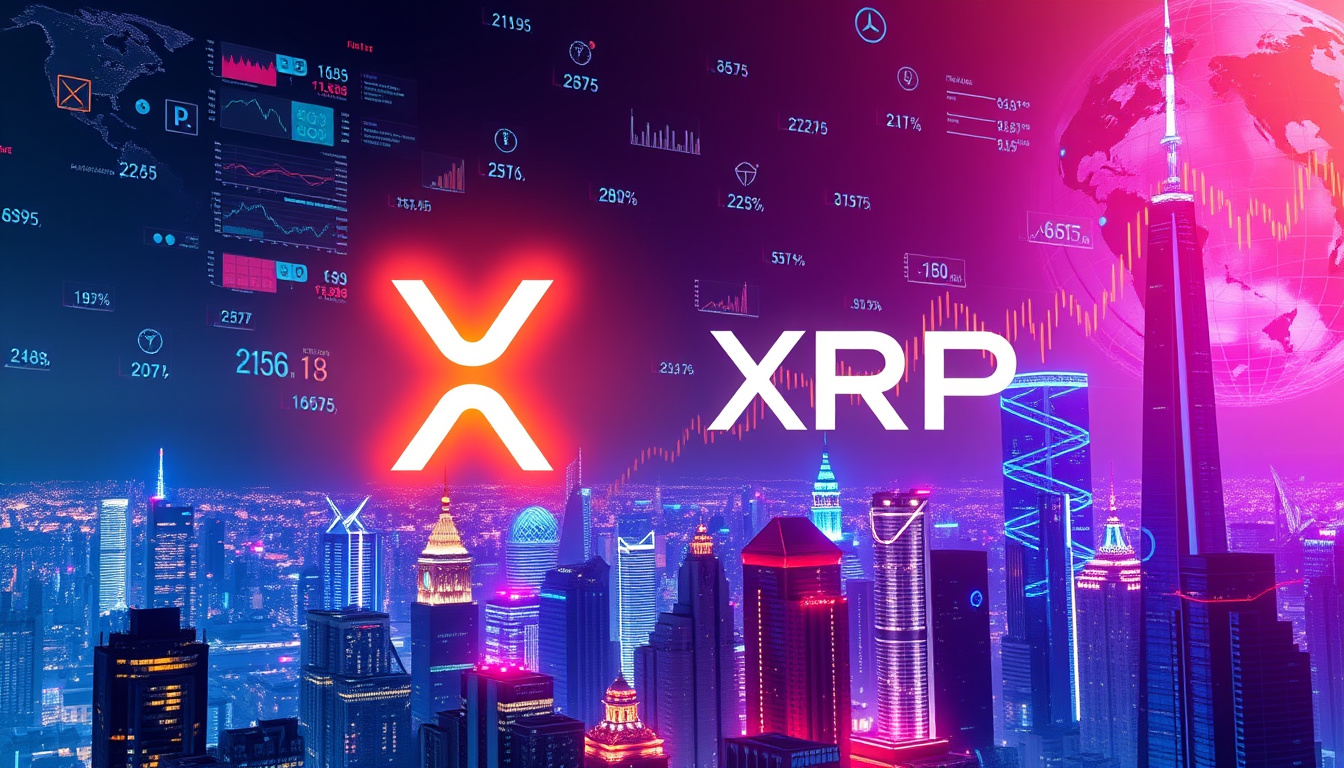In the ever-evolving landscape of digital finance, XRP, the cryptocurrency associated with the Ripple network, has made headlines by recently surpassing globally recognized giants such as PepsiCo, Uber, and BlackRock in market capitalization.
This remarkable surge, which has positioned XRP as the 91st largest asset on the planet with an impressive market cap nearing $203.89 billion, signals a pivotal moment in the cryptocurrency space.
What’s more, XRP's value has skyrocketed by a staggering 7
1.6% over the last month, reaching heights unseen in seven years, largely due to the easing of regulatory pressures following its protracted legal clash with the U.S.
Securities and Exchange Commission (SEC).
As XRP continues to climb the ranks—now holding the title of the third-largest cryptocurrency—the discussions around its potential for reshaping global transactions are more pertinent than ever.
But what does this mean for the future of not just XRP, but the wider crypto market and how it compares to traditional assets?
In this article, we delve deeper into the significance of XRP's market surge and understand the implications of this shift in a rapidly changing economic environment.
Crypto News, Articles and Reports

Key Takeaways
- XRP has surpassed major companies, becoming the 91st largest asset globally with a market cap of approximately $203.89 billion.
- The cryptocurrency's surge is linked to a
71.6% increase in value following the easing of regulatory scrutiny from the SEC. - Despite its rise, market analysts advise caution in comparing cryptocurrency market caps to traditional companies due to fundamental differences.
The Significance of XRP's Market Surge
XRP's remarkable ascent in the cryptocurrency market has caught the attention of investors and analysts alike, particularly as it recently eclipsed significant corporate giants like PepsiCo, Uber, and BlackRock, positioning itself as the 91st largest asset globally.
With a market capitalization soaring to approximately $203.89 billion, this surge is largely attributed to a staggering
71.6% increase in value over the past month, a development attendant with the easing of regulatory concerns following its protracted litigation with the U.S.
Securities and Exchange Commission (SEC).
Now holding the title of the third-largest cryptocurrency, XRP harbors ambitions for further growth, needing an impressive 735% leap in value to gain entry into the top 10 assets worldwide.
Interestingly, a mere 5% increase would allow it to overtake McDonald's in market capitalization.
Enthusiasts within the XRP community are optimistic about its future, highlighting its efficient transaction capabilities and low fees as critical factors that could position it as a frontrunner in global financial transactions.
Nevertheless, analysts urge caution, reminding investors that the market capitalization of cryptocurrencies does not equate directly to that of publicly traded companies, given the distinct nature of assets and rights conferred by traditional equity.
As the competitive landscape between established corporations and budding digital assets continues to evolve, XRP's journey underscores significant changes in how we perceive value and transactions in the modern economy.
Comparative Analysis: Cryptocurrency vs. Traditional Assets
XRP's recent achievements signify a pivotal moment in the ongoing comparative analysis between cryptocurrencies and traditional assets.
As digital currencies like XRP gain prominence, they challenge the long-standing dominance of established companies.
Despite XRP's compelling growth and optimism fueled by its transaction efficiency and cost-effectiveness, the contrasting nature of cryptocurrencies and stocks raises important considerations.
For instance, while XRP's surge reflects speculative trading and market sentiment, traditional assets like stocks offer ownership in stable, revenue-generating companies, accompanied by rights such as dividends and voting privileges.
This fundamental difference means that investors should carefully evaluate the risk-return profiles of these asset classes.
Furthermore, as regulatory frameworks for cryptocurrencies evolve, the implications of their increased market capitalization could reshape investment strategies across both realms, highlighting an unprecedented shift in financial paradigms.
By Wolfy Wealth - Empowering crypto investors since 2016
Get Wolfy Wealth Premium
Disclosure: Authors may be crypto investors mentioned in this newsletter. Wolfy Wealth Crypto newsletter, does not represent an offer to trade securities or other financial instruments. Our analyses, information and investment strategies are for informational purposes only, in order to spread knowledge about the crypto market. Any investments in variable income may cause partial or total loss of the capital used. Therefore, the recipient of this newsletter should always develop their own analyses and investment strategies. In addition, any investment decisions should be based on the investor's risk profile.
